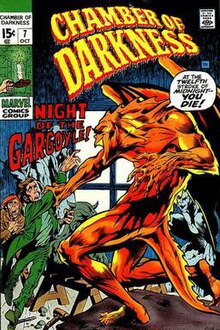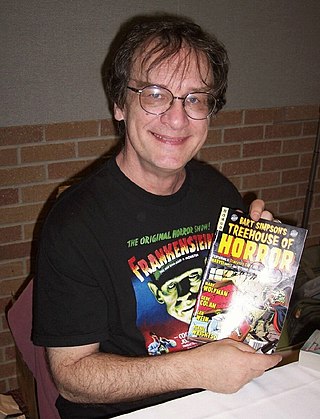
Bernard Albert Wrightson was an American artist, known for co-creating the Swamp Thing, his adaptation of the novel Frankenstein illustration work, and for his other horror comics and illustrations, which feature his trademark intricate pen and brushwork.

Roy William Thomas Jr. is an American comic book writer and editor, who was Stan Lee's first successor as editor-in-chief of Marvel Comics. He is possibly best known for introducing the pulp magazine hero Conan the Barbarian to American comics, with a series that added to the storyline of Robert E. Howard's character and helped launch a sword and sorcery trend in comics. Thomas is also known for his championing of Golden Age comic-book heroes – particularly the 1940s superhero team the Justice Society of America – and for lengthy writing stints on Marvel's X-Men and The Avengers, and DC Comics' All-Star Squadron, among other titles.
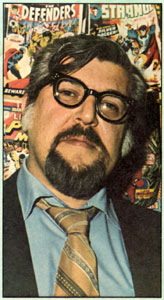
John Buscema was an American comic book artist and one of the mainstays of Marvel Comics during its 1960s and 1970s ascendancy into an industry leader and its subsequent expansion to a major pop-culture conglomerate. His younger brother Sal Buscema is also a comic book artist.

Barry Windsor-Smith is a British comic book illustrator and painter whose best-known work has been produced in the United States. He attained note working on Marvel Comics' Conan the Barbarian from 1970 to 1973, and for his work on the character Wolverine, particularly the 1991 "Weapon X" story arc. His other noted Marvel work included a 1984 "Thing" story in Marvel Fanfare, the "Lifedeath" and "Lifedeath II" stories with writer Chris Claremont that focused on the de-powered Storm in The Uncanny X-Men, as well as the 1984 Machine Man limited series with Herb Trimpe and Tom DeFalco.
Amazing Adventures is the name of several anthology comic book series, all but one published by Marvel Comics.

Alfonso Williamson was an American cartoonist, comic book artist and illustrator specializing in adventure, Western, science fiction and fantasy.
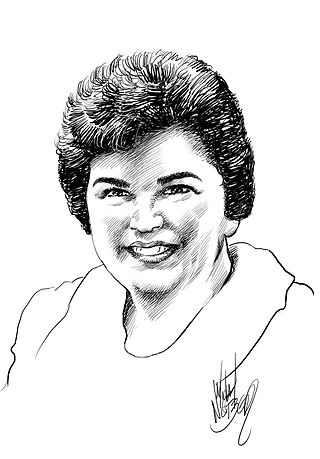
Marie Severin was an American comics artist and colorist best known for her work for Marvel Comics and the 1950s' EC Comics. She is an inductee of the Will Eisner Comics Hall of Fame and the Harvey Awards Hall of Fame.
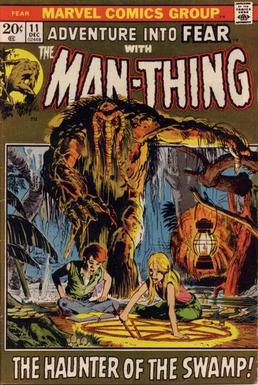
Adventure into Fear is an American horror comic book series published by Marvel Comics from cover dates November 1970 through December 1975, for 31 issues. This is its trademarked cover title for all but its first nine issues, though the series is copyrighted in its postal indicia as simply Fear.
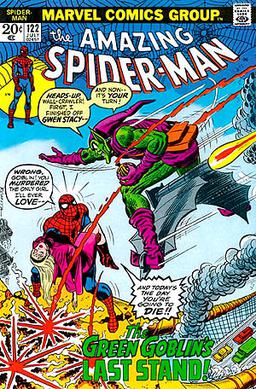
The Bronze Age of Comic Books is an informal name for a period in the history of American superhero comic books usually said to run from 1970 to 1985. It follows the Silver Age of Comic Books and is followed by the Modern Age of Comic Books.
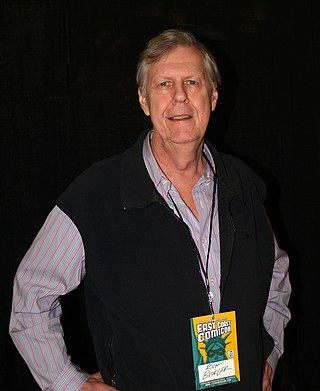
Rich Buckler was an American comics artist and penciller, best known for his work on Marvel Comics' Fantastic Four in the mid-1970s and for creating the character Deathlok in Astonishing Tales #25. Buckler drew virtually every major character at Marvel and DC, often as a cover artist.
Sydney Shores was an American comic book artist known for his work on Captain America both during the 1940s, in what fans and historians call the Golden Age of comic books, and during the 1960s Silver Age of comic books.

The Academy of Comic Book Arts (ACBA) was an American professional organization of the 1970s that was designed to be the comic book industry analog of such groups as the Academy of Motion Picture Arts and Sciences. Composed of comic-book professionals and initially formed as an honorary society focused on discussing the comic-book craft and hosting an annual awards banquet, the ACBA evolved into an advocacy organization focused on creators' rights.

Tower of Shadows is a horror/fantasy anthology comic book published by the American company Marvel Comics under this and a subsequent name from 1969 to 1975. It featured work by writer-artists Neal Adams, Jim Steranko, Johnny Craig, and Wally Wood, writer-editor Stan Lee, and artists John Buscema, Gene Colan, Tom Sutton, Barry Windsor-Smith, and Bernie Wrightson.
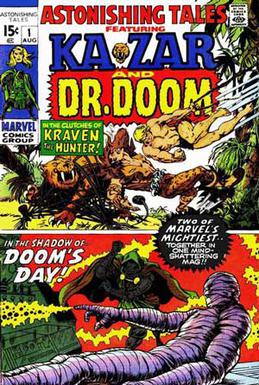
Astonishing Tales is an American anthology comic book series originally published by Marvel Comics from 1970 to 1976. Its sister publication was Amazing Adventures.
John Costanza is an American comic book artist and letterer. He has worked for both DC Comics and Marvel Comics. He was the letterer during Alan Moore's acclaimed run on Swamp Thing. The bulk of Costanza's art assignments have been for anthropomorphic animal comics and children-oriented material.
Notable events of 1972 in comics. See also List of years in comics.
Notable events of 1974 in comics. See also List of years in comics.

The Savage Sword of Conan was a black-and-white magazine-format comic book series published beginning in 1974 by Curtis Magazines, an imprint of American company Marvel Comics, and then later by Marvel itself. Savage Sword of Conan starred Robert E. Howard's most famous creation, Conan the Barbarian, and has the distinction of being the longest-surviving title of the short-lived Curtis imprint.
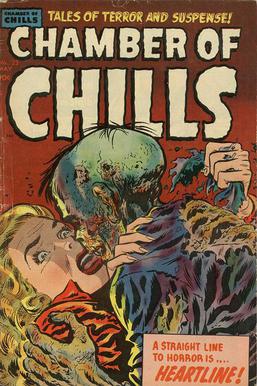
Chamber of Chills is the name of two anthology horror comic books, one published by Harvey Publications in the early 1950s, the other by Marvel Comics in the 1970s.
The Goethe Award, later known as the Comic Fan Art Award, was an American series of comic book fan awards, first presented in 1971 for comics published in 1970. The award originated with the fanzine Newfangles and then shared close ties with The Buyer's Guide to Comics Fandom.
